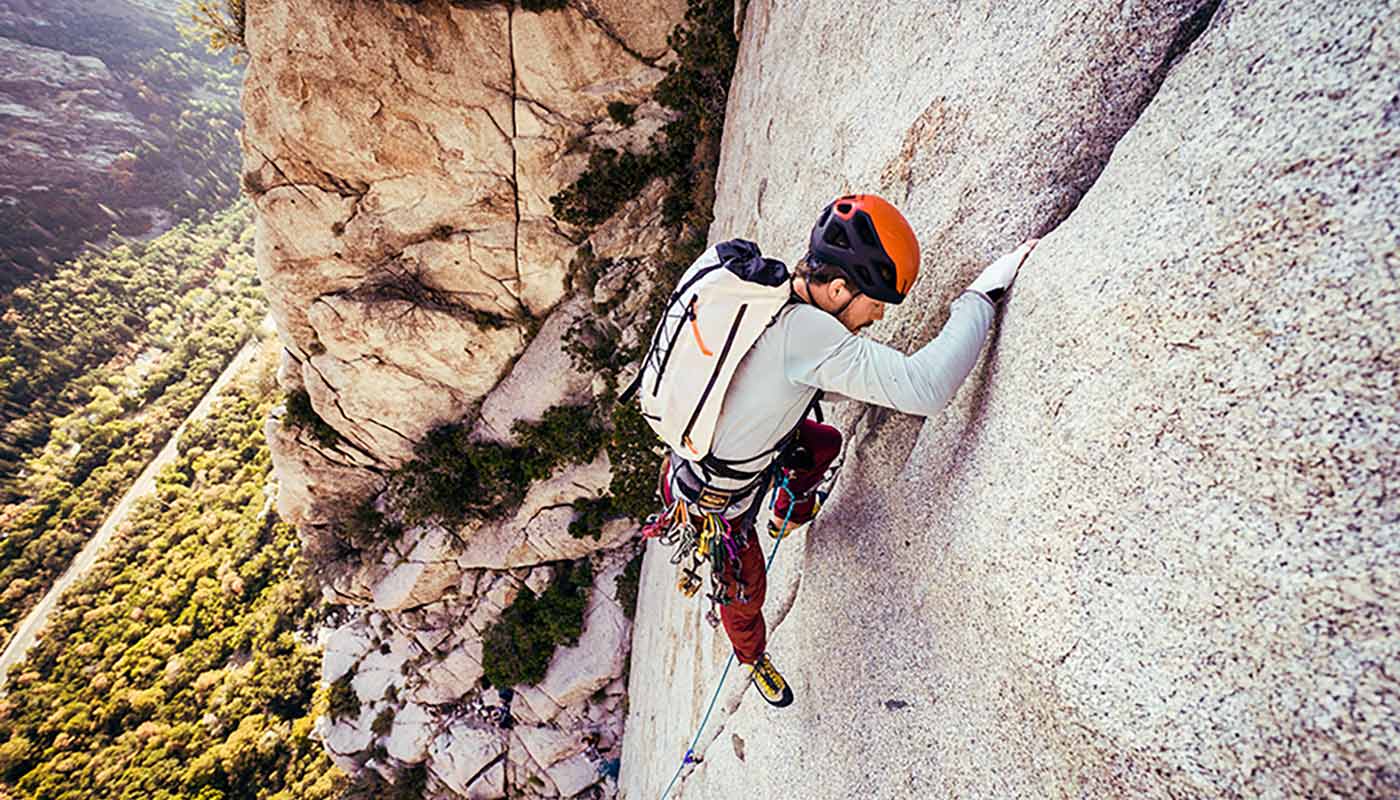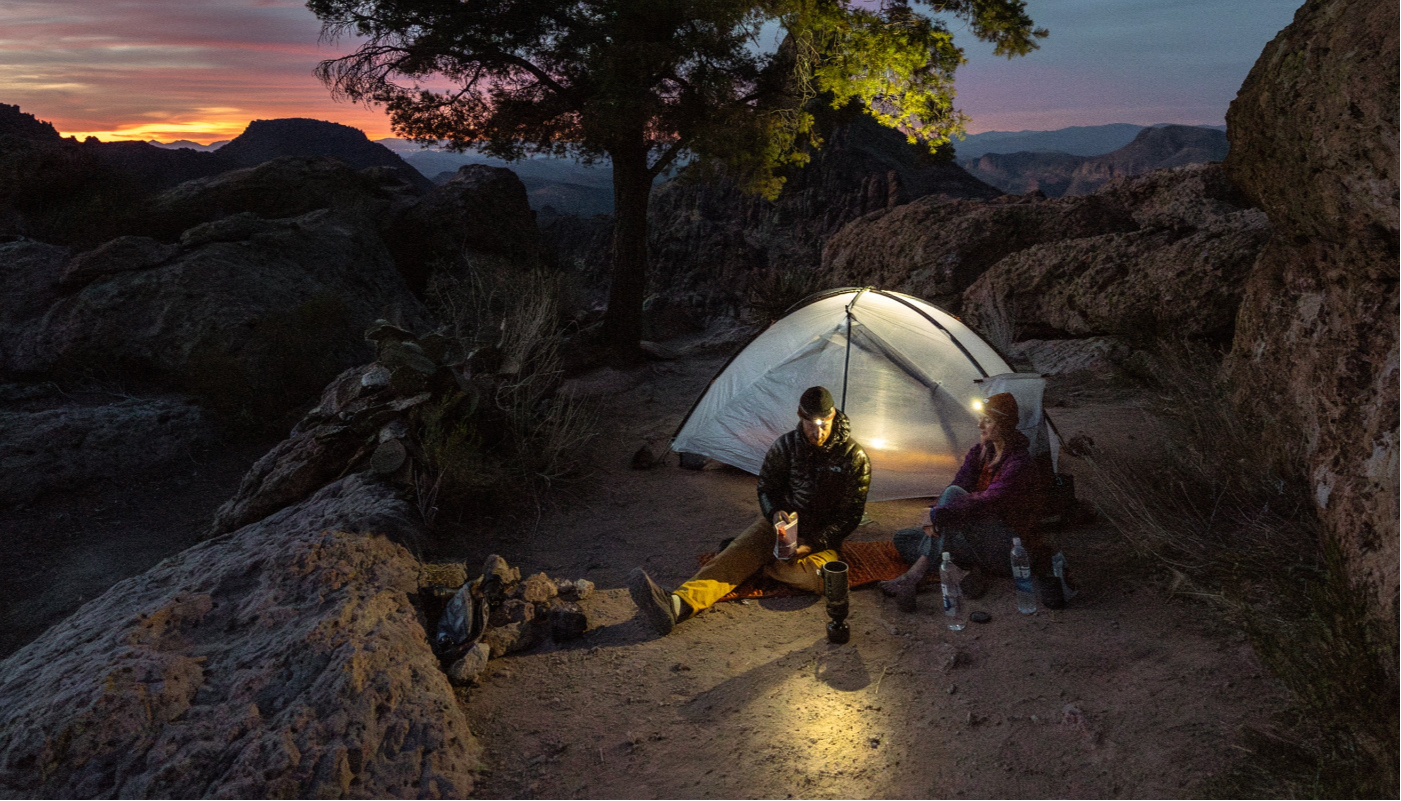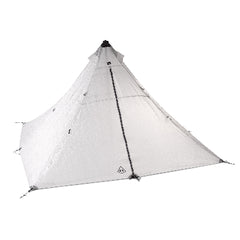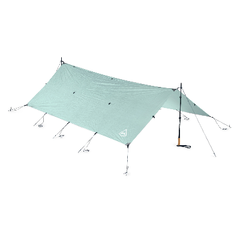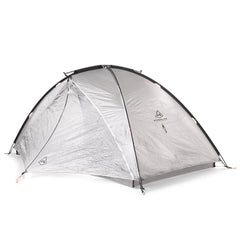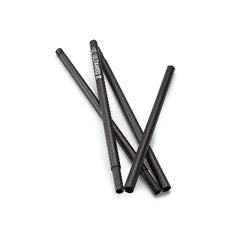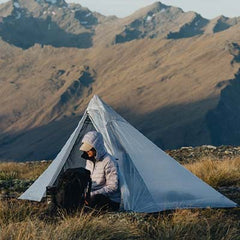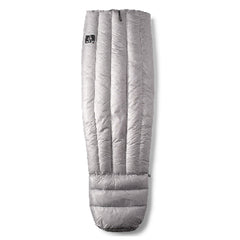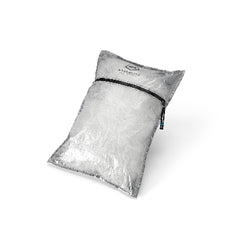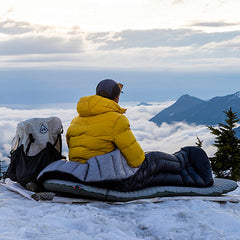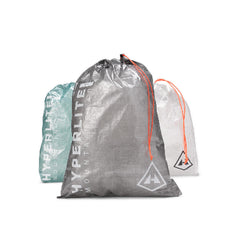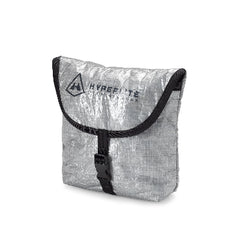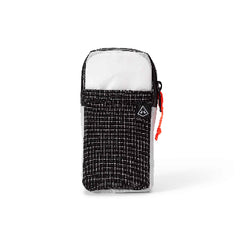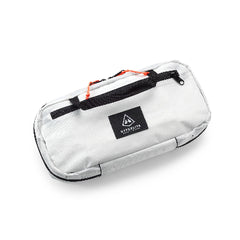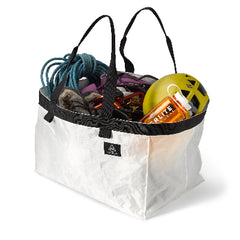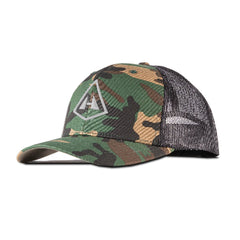Words from Jenner Haseltine (Kardi)
Photography by Cody Jackson (Feathers)
8/19/2024
“Imagine a hiking trail that will trace a 350-mile (now 486-mile) route through some of the most interesting and varied mountain country in Colorado. Make it a gentle trail, not a back-breaker so that anyone in modest physical condition can enjoy it. Plan the route in segments so it can be walked a little at a time (or more if one wishes). Be sure that there are lots of easy access or “feeder” trails. Trace it for all season use; give the ski tourers their chance too. And above all, make the whole route interesting- even educational. Let it take hikers through a maximum variety of ecosystems, over all kinds of terrain, past historical sites from the by-gone mining and pioneer days. Let them discover firsthand all the richness the Colorado mountains have to offer. Don’t miss a thing.” Sumner, D. (1974). The Colorado Trail Takes Shape. Colorado Magazine, Volume X.(July/August Vacation Issue), 26.

The Volunteers in the National Forest Act of 1972 authorized the USFS to recruit and train volunteers to assist in managing national forests. This act was groundbreaking not only in that it permitted the Forest Service to accept volunteer services and reimburse them for personal expenses for the first time, but also because it built the framework for the use of volunteer services in building the Colorado Trail. Gudy Gaskill, then chairwoman of the Colorado Mountain Club’s Huts and Trails Committee, was recruited by the Colorado Mountain Trails Foundation, now Colorado Trail Foundation, to spearhead the building effort of the CT after the Act’s passing in May 1972. Over the following three decades, Gaskill persevered through budget cuts, waning support from the USFS and CTMF and general doubts from the media and public. She finally retired from the CTF in 1998 at the age of 71, only after all of the trail signage had been properly placed in what she considered the finishing touch of the CT’s construction. The trail was built almost entirely by volunteer hands over this thirty-year period, it is entirely thanks to them and the vision of Gaskill that we are able to enjoy this phenomenal westerly route today.

Throughout our first 100 miles SOBO on-trail, Feathers and I have frequently marveled at how meticulously maintained the CT has been, nary a blow-down nor obstacle in sight as we’ve stretched our legs over many miles of flowy singletrack. Departing Waterton Canyon on our first day we ran into Snackbox (Jared Champion), a hiker, documentarian and content creator who has covered over 1,800 miles on the Colorado Trail, returning in 2024 to celebrate its 50th anniversary in a special way. The first thing that caught my eye as I took a seat under the pavilion was a blue Jansport external-frame pack with hip-wings protruding from either side, at least double the size of my Unbound and certainly a heavier load to bear. Next was the pair of Eddie Bauer K-6 boots, rubber soles hand stitched to the now-supple leather supper and a blunt shape that more closely resembled an oldschool pair of three-pin nordic boots than what I would consider a hiker. After a few minutes of spirited conversation about the adventure we had just begun, I gained the much-desired context of his kit. As it turned out, Snackbox had gone through the painstaking effort to match his kit as closely as possible to the actual backpacking gear available in 1974 in order to commemorate the 50th anniversary of the trail via his third thru-hike of the CT.

Caught up in our own excitement of starting the trail, Feathers and I continued on to our first campsite along the Platte at the start of segment two. As the day’s adrenaline finally began to wear off we realized that we were both eager to learn more about Snackbox’s mission and vintage kit. My curiosity was especially piqued by the rugged turquoise tarp shelter I watched him pitch on the other side of the river later that evening. I was excited to observe the absence of his shelter when we left camp the following morning, hoping to catch up to him further down the trail. Just as I was beginning to crave second-breakfast, we spotted Snackbox in a clearing twenty yards from the trail. He was more than happy to chat with us further, and we sauntered over to the clearing where I was happy to see the contents of his bag scattered around in full-view. This is what we learned.
As a self-proclaimed extrovert, Snackbox was concerned with the anti-social implications surrounding the first round of Pandemic lockdowns in 2020. Having already thru-hiked the CT, he decided to create a Youtube channel called Outside Comfort Zone with the purpose of helping others best experience their own thru-hikes of the trail. The channel became a way for him to maintain human connection in a time of physical isolation. His now-wife began watching his videos in anticipation of her own thru, and they ultimately met in 2021 when she picked him up from the airport with plans of hiking the trail together. After reaching Twin Lakes that summer, about 170 miles in (SOBO), they decided to get married. Post-trail, her professional ambition led them both to Chicago while Snackbox continued commuting to Atlanta where he had been a college professor for several years. This strenuous cycle of travel ultimately took its toll, especially after the birth of their first child, and Snackbox decided to leave higher education in order to remain close to his family. He tried working a nine-to-five, which he likened to prison, and eventually realized that a creative outlet was necessary for his well-being in this time of transition. Inspired by “Mile, Mile and a Half”, a 2013 documentary with a premise he describes as “a bunch of average Joe’s who hike the John Muir Trail”, Snackbox began looking into how the film had been produced. He learned that the documentary makers had partnered with the American Hiking Society under a model that facilitates the completion of an individual’s project through an existing non-profit’s sponsorship. With much research into the non-profit sector and fundraising efforts, and a desire to commemorate the trail’s 50th anniversary with a thru-hike, he partnered with the Colorado Nonprofit Development Center in order to create his own film project, 50/50 on the Colorado Trail. Snackbox writes about the project “At the most basic level, this documentary, tentatively titled 50/50 on the Colorado Trail, will capture the story of a hiker celebrating the Colorado Trail’s 50th anniversary by thru-hiking the footpath using only gear that was available at the time of the trail’s founding. The film will blend new footage and on-trail interviews with archival footage to tell the story that hiking gear might have evolved, yet the outdoors has become an even greater source of human connection.” Anyone passionate about the completion of this documentary and the importance of storying the evolution of the CT thru-hiking experience can currently donate to the project here.

Throughout his preparation for launching the project, Snackbox’s research revolved around not only the non-profit space, but the period-correct gear as well. He utilized resources such as the Outdoor Gear Archive, a Utah state University sponsored collective dedicated to preserving the history of outdoor gear, in order to confirm that his kit was as period-correct as possible. He also made connections through facebook groups with “old-timers who were digging through their closets” to find circa 1974 gear. He proceeded to purchase most of the necessary components from Ebay, with the exception of his Feathered Friends sleeping bag. After explaining his mission to FF’s general manager, Juna Gates, she dug into their archives, found the pattern from 1974 and produced a “brand new” 1974 FF bag for Snackbox. They did the same for his puffy. Snackbox was so detail-oriented in gathering his gear that he even mentioned being remiss about not being able to find a pair of Eddie Bauer K-6’s with the red laces, having to opt for brown instead. He even had Leki’s Makalu trekking poles from their first production year in 1974. Of course, there are a few exceptions to the historical accuracy of his kit. He felt that carrying a Tyvek ground sheet could be considered “cheating” but pointed out that the actual product had been invented in 1955. He was also carrying a bear canister, the production of which did not begin until 1977. However, I believe the three-year difference is insignificant when it comes to safe and effective food storage. He also had leukotape, a necessity for making thru-hiker miles in a 50-year-old pair of boots. I certainly think Snackbox got as close as anyone could to recreating a 1974 backpacking setup. Even in having a few exceptions, he was so knowledgeable about his gear that he was able to both point them out and provide dates for their conception.

Feathers and I have put much thought into what it means to backpack with an “essentialist mindset” as suggested by The Trailhead overlord Mark Sirek. While a hiker going for an FKT may feel that their kit is dialed with a sub-seven pound base weight, and an old-school hiker may have no issue adjusting to the weight of what I might consider a car-camping tent, I personally feel after several thousand trail miles that the essentialist sentiment embodies the balance between what can be referred to as the “weight weenie” UL culture and packing with anticipation of what might provide an extra ounce of comfort as well as weight. Over the years I have leaned more toward packing additional comfort items, e.g. an inflatable pillow or gore-tex rain pants, especially as I have been fortunate to upgrade my backpack, sleep system and shelter to lighterweight options. The concept I believe we can all agree is harmful to an essentialist mindset is packing for your fears. The best example I can cite is overpacking food. Copious amounts of calories are essential while backpacking, however I realized I may have overdone it coming out of Abingdon Virginia on the AT when I was hanging a plastic bag’s worth of snacks in addition to my original food bag. Snackbox cited his first backpacking trip, the Collegiate Loop, when he was so concerned about running out of fuel that he carried three eight ounce isobutane canisters along with one four ounce, and had only partially depleted the four ounce canister by the time he had finished. Feathers, Snackbox and myself all agreed that the best defense against packing for your fears comes with experience. We all start somewhere, and we all have to make the initial mistakes in order to learn from them. As Snackbox said “Everybody starts out with a pack that’s way too heavy. They all have that story. Then, the big question is whether or not you let that ruin (backpacking) for you, or if you keep going, modify and figure it out.
Snackbox’s setup prior the 50/50 project, and after almost three thru-hikes of the CT under his belt, was what he referred to as “budget ultralight.” He used a Six Moon Designs backpack as well as their Deschutes-plus tarp, a Thermarest quilt, Big Agnes pad and “the cheapest pair of Asics runners (he) could find that fit (his) foot shape.” Not the lightest setup money can buy but still perfectly reasonable in terms of weight because he knew to pack with said essentialist mindset. Nothing less, nothing more. When helping others fill their packs, Snackbox’s take on the essentialist mindset is to consider the difference between packing something you want versus something you need. Speaking once more to how experience is a determining factor, he feels that a backpacker is bound to feel more comfortable over time. For example a green hiker may filter all of their water while a seasoned hiker may take the risk of drinking unfiltered water from a spring flowing directly from the ground. As your comfort level increases in the wilderness, so will your packing efficiency.

When we saw Snackbox later on at the Fire Station at the end of the 10-mile water carry through the 1996 burn zone, he laid his Jansport pack down with a hearty “thud”, eyed up my Unbound and said something to the tune of “damn that pack looks nice right about now.” It truly is remarkable how far the evolution of gear has progressed over the last half-century. In taking the essentialist mindset to heart, and especially if you lean towards the UL crowd, remember that even the most budget friendly essential options of present-day will remain significantly lighter than the load Snackbox will be humping for the remainder of the Colorado Trail.
